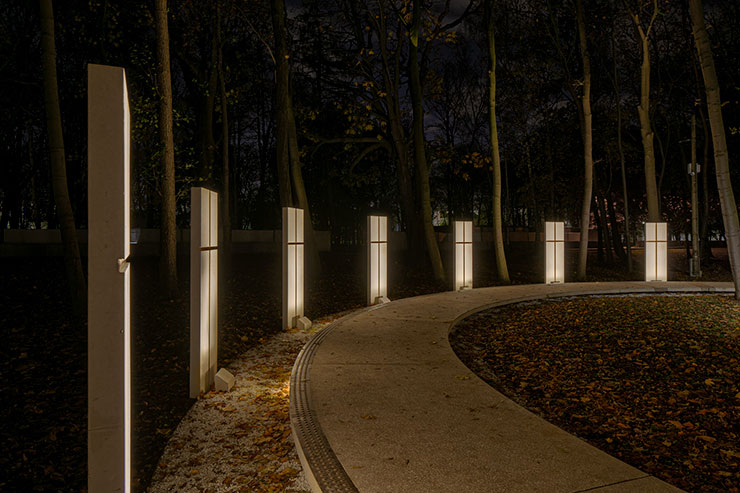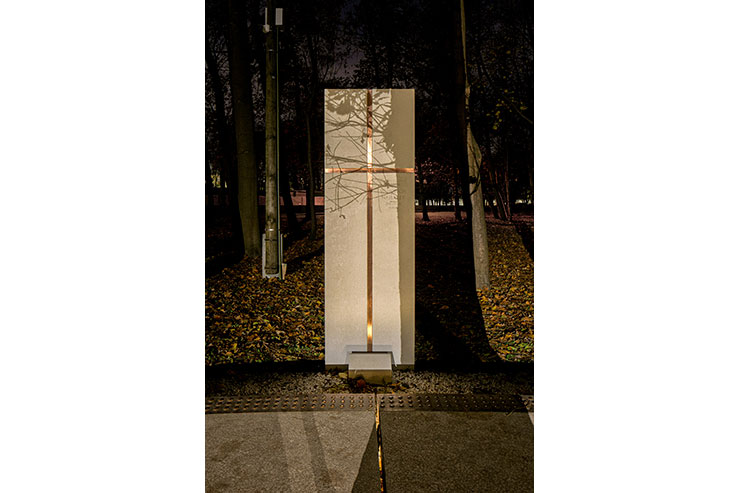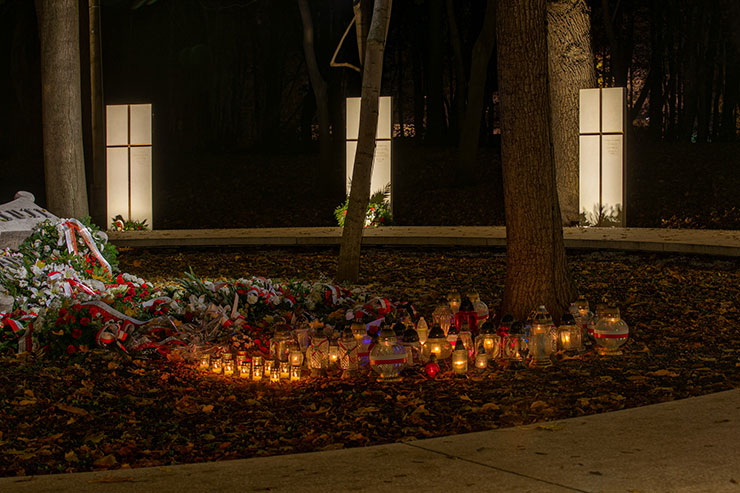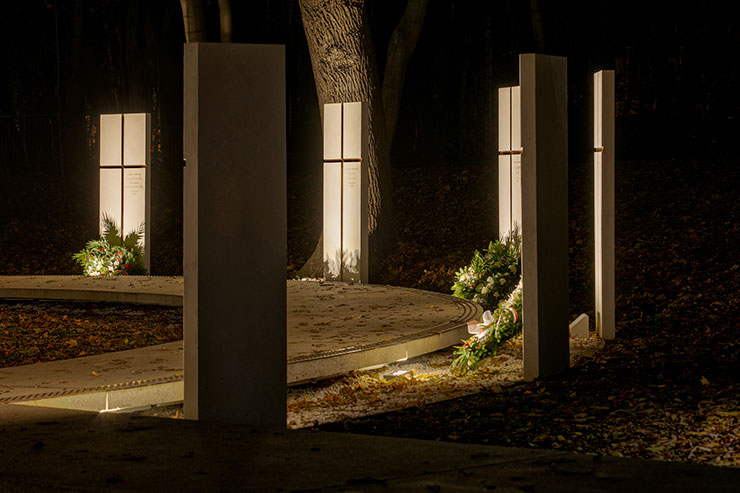- ABOUT
- JUDGING
- CONTACT
- MORE
- 2024 Entries
- Installations 2024
- Past Winners
- Subscribe
- [d]arc directory
- arc magazine
- darc magazine
Westerplatte Cemetery, Poland
ProjectWesterplatte - Polish Army Soldiers' CemeteryLocationGdańsk, PolandLighting DesignQlab Laboratory of Light, PolandArchitectNM Architekci, PolandClientMuseum of Second World WarLighting SuppliersLira Lighting, Hess, L&L Luce&Light
Gdańsk Westerplatte – a symbolic place. A place of the outbreak of World War II, a site marked by the heroism and patriotism of the Poles. An exceptional place, which every Pole knows from historical accounts of its heroic defenders in the first hours and days of the Second World War.
The Polish Military Depot in the Free City of Gdańsk was established in 1920. Four years later, the League of Nations decided to give the entire Westerplatte peninsula to Poland. Who could have guessed at the time that this piece of land on the Bay of Gdańsk would become a symbol of defiance, heroism, and patriotism for Poles? It would also become a symbol of the beginning of the tragic war that engulfed the entire world in flames, claiming tens of millions of human lives.
On 1 September 1939, at 4:45 am, the German battleship Schleswig-Holstein began shelling Westerplatte. The uneven battle lasted seven days. In the face of great losses among the defenders, Major Henryk Sucharski’s decided to capitulate, bringing the fighting to an end.
Today, on the site of Guardhouse No. 5, destroyed on 2 September 1939, the Cemetery of the Defenders of Westerplatte is located.
In the last two years, this memorial site has been redesigned, and, especially after dark, thanks to a light plan designed by QLAB Laboratory of Light, it has acquired a unique. Due to the site’s substantial historical, emotional, and symbolic significance, the role of light is primarily to reinforce the symbolism resulting from the architectural and urban planning concept.
When the days met their end
and death called in the summer,
straight to heaven, marching in fours went
the soldiers of Westerplatte.
K.I.Gałczyński
Streaks of light pointing upwards are an allegory of the transience of human life. They also symbolise the walls of the former guardhouse, where the defenders fought and died, with trees as the silent witnesses to their heroism. Today, the main walk of the Cemetery of the Defenders of Westerplatte winds among the trees. The subtle illumination of trunks and foliage as a backdrop to the site vests it with an additional, unusual character. Light – synonymous with life, darkness – the equivalent of death, and shadow – a fleeting memory. A delicate play of contrasts between darkness and light, showing the fate of soldier-humans enmeshed in the inevitable paths of history and the fragility of human life. The shadows the branches cast on the tombstones highlight the drama and multi-dimensional nature of the place. A path with patches of light leads to the site of the battle and burial of sixteen soldiers leaving us in a space rich in thought and reflection on the transience of human life and the winding paths of history.
Poland’s highest military decoration, the Virtuti Militari Cross placed in the middle of the design combines elements of a deed, life, and memory of the fallen and those who survived.
In Gdansk, we stood like a wall,
at German cannon jeering defiance,
now among the clouds, we soar,
the soldiers of Westerplatte.
K.I.Gałczyński
The uniqueness and distinctive atmosphere of the site can be experienced by taking a trip to the Polish Army Soldiers’ Cemetery at Westerplatte, the place where the most terrible of all wars began.









